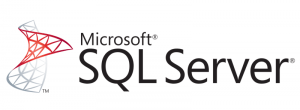Microsoft SQL server replication & clustering
 At catalyst2, we believe that a combination of SQL server replication and SQL server clustering from Microsoft is ideal for any important or high transaction applications. This will offer you load balancing of transactions over multiple databases as well as automatic failover so that you can free up your IT resources and mitigate downtime.
At catalyst2, we believe that a combination of SQL server replication and SQL server clustering from Microsoft is ideal for any important or high transaction applications. This will offer you load balancing of transactions over multiple databases as well as automatic failover so that you can free up your IT resources and mitigate downtime.
SQL server replication
SQL server replication is a series of technologies designed to copy and distribute database objects and data from one database to another and then synchronise them in order to keep them consistent. At catalyst2, we offer Microsoft SQL server replication services so that you can distribute your data between locations and devices over wide area networks, local networks, wireless connections, the internet and dial-up connections. Rather than distributing the database as a whole, SQL server replication only distributes the parts of the database that are selected beforehand, such as views or tables.
What type of SQL server replication do I need?
The type of replication you opt for depends on a variety of factors, including the quantity and type of data to be replicated, the physical replication environment, and whether or not the data is replicated at the Subscriber. The physical replication environment includes the location and number of computers involved in the replication process and whether or not these computers are servers or clients (handheld devices, laptops, or workstations).
With Microsoft SQL server replication from catalyst2, you can expect the following benefits:
– Minimised locking conflicts and improved performance when users work from different locations
– Easy maintenance
– Your site will be able to work on its own, setting up its own procedures and rules to work with its own copy of data
– The data is moved closer to users
SQL server clustering
A Microsoft SQL server cluster is a group of more than two physical servers (called nodes) that both have access to shared storage that contains the disk resources needed to store database files. One of the nodes is known as the ‘active node’, on which the production workload is run by an SQL server, and the other one is called a ‘passive node’, which the SQL server is installed on but does not run. If the active mode SQL server fails, the passive node turns into the active node and runs the SQL server workload. In order to run both nodes at the same time, you can also deploy a Windows Failover Cluster.
With SQL server clustering from catalyst2, you can benefit from:
– Minimum downtime during a failover period
– When the server fails, you are not required to make any manual adjustments because the response is automatic
– Upgrades can be enabled without hindering the client’s work and forcing other users to log off
– Significantly reduced downtime compared to other routine servers
– Servers are not required to be renamed during clustering because the client machines or users won’t feel a difference in the performance during failover
– You can return to the primary server as soon as it is fixed
For more information about the web hosting services we provide at catalyst2, get in touch with our friendly team of experts by calling us on 0800 107 79 79 or by emailing us at sales@catalyst2.com today. We’re proud to offer 24-hour support with the minimum of fuss so that you can make your hosting simpler.

